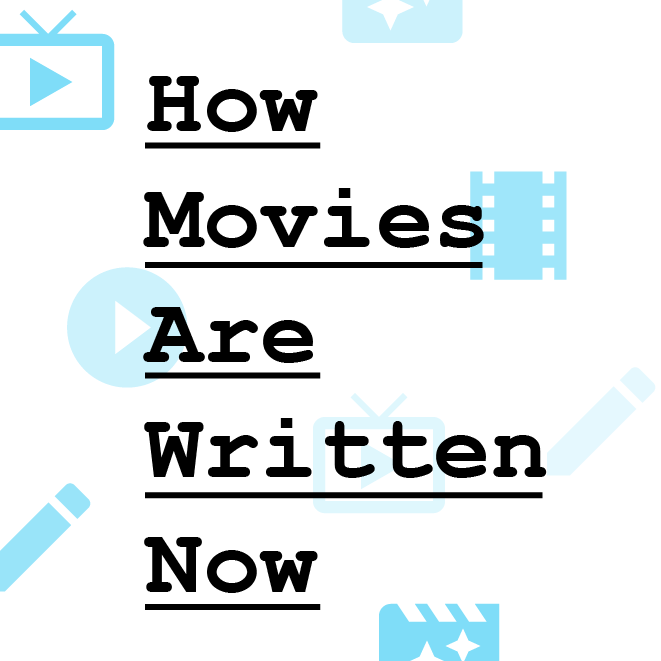
A few years ago, the screenwriter John August — who wrote Go, Charlie’s Angels, Big Fish, and many other films and is the co-host of the highly influential Scriptnotes podcast for screenwriters — stumbled into a tidy metaphor for the state of movie screenwriting today. He was struggling to find a film idea to pitch to Disney. August, who has since co-written a Will Smith–starring version of Aladdin, understood, as he says, what “Disney would actually make: princess movies, adaptations of live-action cartoons, Star Wars, and Marvel; there’s not a lot else.” Then he remembered it also made films based on theme-park attractions (Pirates of the Caribbean, Tomorrowland, Haunted Mansion, Mission to Mars, and The Country Bears), so he developed a pitch based on his favorite ride, Tower of Terror. The pitch, however, was quickly rejected, because the studio — which has already scheduled three untitled Marvel movies for 2020 — was doubling down on franchises even more than he knew. “They ended up replacing the physical thing, the actual Tower of Terror ride,” he says drily, “with a Guardians of the Galaxy ride.”
These days, for many screenwriters, the studio system can feel like a small, small, small, small world. And Hollywood film writers — along with everyone else — have noticed a simultaneous boom in Peak TV. Which means that, for Hollywood screenwriters, even as studio slates shrink and become more attuned to event blockbusters, opportunity on the small screen abounds. “Premium cable and the entrance of Netflix and Amazon hastened this movement toward the idea that a TV series can be anything — and that kind of flexibility was unimaginable 15 years ago,” says August.
To understand this change, note that, in 2016, there were 455 scripted original TV series in production — up from 192 in 2006. In movies, the domestic box office is flattening, while global box office hit a record $38.6 billion last year. The big-six studios are chasing moviegoers around the globe, which means one thing: blockbusters. “Then, every November and December, studios make that one awards-season movie and pin their hopes on it but don’t do it any other time of the year because they figure cable TV’s got that covered,” says August.
There are, however, lessons that Hollywood movie studios — and screenwriters — are learning from the rise of Peak TV. For starters: Sometimes writers work better in teams. On TV, the concept of a writers’ room, where a dozen or so writers brainstorm, has long been the norm. But collaborative writing has traditionally been derided in film circles — until recently, as the practice has been adopted by studios looking to assemble a brain trust to shepherd a prized property. Studios might set up round tables for a few days, a few weeks, or a month to hash out an elaborate mythology.
Paramount’s all-star Transformers writers’ room — which included Akiva Goldsman (A Beautiful Mind), Zak Penn (X-Men: The Last Stand), Robert Kirkman (The Walking Dead), and Christina Hodson (Unforgettable) — paid high-end writers $200,000 each to spend two weeks plotting the franchise’s next installment. In fact, story-development teams are springing up all over Hollywood, from the Lucasfilm Star Wars Story Group to Universal’s Monsters’ rooms. “You go in with blank whiteboards and think, What’s interesting about this property?” August says. “Sometimes, you’re generating three movies and two TV series per property.” Many screenwriters actually enjoy these round-table sessions. “Comedy has always been built on the writers’-room model,” says writer-director Nick Stoller (Neighbors), who cites his long relationship with Judd Apatow for inspiring his own practice. “Judd started on Freaks and Geeks, and his movies are made in a similar way — he treats each movie like a giant episode of television.” Max Borenstein, who’s written Godzilla movies, is ambivalent. “Feature-writing rooms can be great, but the problem is it sometimes becomes a pissing contest between feature writers who are thinking Maybe I’ll get hired to write the next draft, rather than How can I contribute to the whole?”
Another lesson Hollywood writers are taking from TV: As long as you get your story on a screen, don’t worry too much about what kind of screen it is. Just as early Netflix series like House of Cards sparked a debate — “But is it really TV?” — that seems ludicrous in hindsight (as Hulu’s The Handmaid’s Tale cleans up at the Emmys), screenwriters are learning that a movie is a movie, even if it premieres on a hard drive. Screenwriter Oren Uziel (22 Jump Street) frequently works with the studios, but after he directed the spec script that got him those jobs in the first place — the twisty crime thriller Shimmer Lake — Netflix made him an offer he couldn’t refuse and so he released the film online. “There are still a lot of movies getting made, and not everything is a franchise,” says Uziel. “If everyone’s writing TV specs, it becomes a supply-and-demand issue: Zig when everyone else is zagging. Write a movie. Streaming services are looking for them.” All over Hollywood, top-notch screenwriters who have spent their careers writing screenplays that never get produced are dusting off old scripts to see if they might work in this new ecosystem — if not as studio films, then as streaming originals. “For years, I was told Westerns don’t travel overseas,” says Scott Frank, who wrote Out of Sight and who struggled for years to make his Western Godless — before adapting it as a six-episode mini-series for Netflix.
A third lesson taken from TV: Diversity works. On TV, hits like Empire and hitmakers like Shonda Rhimes have established a strong market for creative diverse voices. Studios have traditionally been reluctant to embrace this — but now writers from TV are proving this model works in film, too. Tracy Oliver co-wrote Girls Trip, one of the summer’s only original hits, and became the first black female screenwriter to write a film that grossed over $100 million. Oliver grew up “sitting in a theater watching movie stars,” she says. “TV was always great, but film was the dream.” After film school, though, she found that a traditional film career seemed unrealistic for a black woman telling stories about black women. “I was constantly being told that if I wanted to make a living, I’d have to write more mainstream content, which translates to more white-male content.” Instead, Oliver created her own opportunity by producing the hit YouTube series The Misadventures of Awkward Black Girl with her college friend Issa Rae, who went on to create HBO’s Insecure. She found work in TV on Survivor’s Remorse, met her Girls Trip co-writer, Black-ish creator Kenya Barris, and found that television, while hardly equitable, was more inclusive. And thanks to inclusive hits on TV, she’s found it easier to argue that such stories deserve a place in theaters. “Girls Trip doesn’t exist without the success of shows like Black-ish and Atlanta proving that there’s an audience for it,” says Oliver. (In related news, Oliver was announced yesterday as the writer for the Paramount Network’s TV reboot of the 1996 comedy First Wives Club, which she says will star a diverse cast.)
The Peak TV boom has been built in part on telling stories to underserved audiences — just think where Amazon would be without Transparent. That mentality is leaking into the world of film. “TV has become more personal and niche, speaking to underserviced groups in a specific way,” says Barris. “If you speak to your core audience, your core audience will branch out. Same thing that happened with Girls Trip happened with Get Out,” the horror movie that turned out to be this year’s most profitable film.
When Oliver went out to raise money for her forthcoming directorial debut, a romantic comedy called The Layover, she was looking for images of black couples to feature in a look book for a potential financier. “I couldn’t find recent images of black people in love together in film,” she says. She pulled images from ’90s studio hits The Best Man and Love Jones but says “there was nothing from the last decade.” She realized that “if you’re trying to make a black love story in the studio system, all of the black movie stars are over 40,” because Hollywood stopped making young black romances. “If you’re trying to do a young black love story, there’s just nobody in that age range, minus a Michael B. Jordan, that gets that movie made.”
Oliver finished her look book, by the way, by pulling the images she needed from TV shows. And she was able to use that look book — and the success of those shows — to secure funding for her movie.
*This article appears in the October 2, 2017, issue of New York Magazine.





